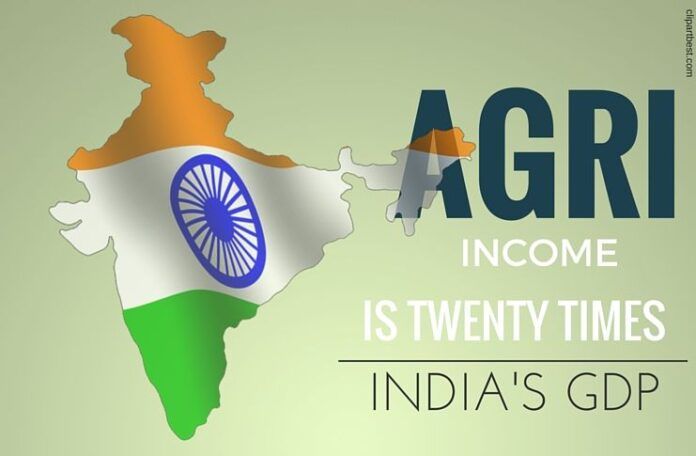
[dropcap color=”#008040″ boxed=”yes” boxed_radius=”8px” class=”” id=””]T[/dropcap]he government has at last released some tax numbers but not as comprehensively as it used to, under All India income Tax statistics till 2000. A total of 2.87 crore (cr) individuals filed income tax returns in 2012-13, but 1.62 crores of them did not pay any tax – leaving the number of taxpayers at just about 1.25 crores which was close to 1 percent of the country’s total population of about 123 crores at that time. As many as 5,430 individuals paid income tax of over ₹1 crore. Out of this, the tax range was ₹1-5 crore for more than 5,000 individuals.
Just three individuals were in the top bracket of Rs.100-500 crores (they paid a total tax of ₹437 crores($65.7 million)). Six individuals fell in the high-end earning bracket of ₹50-100 crore of salary income. In the salary range of ₹1-5 crore, there were as many as 17,515 individuals.The data further said that the bulk of individuals, who filed returns for the assessment year 2012-13 earned an annual salary between ₹5.5 lakh and ₹9.5 lakh. Over 20.23 lakh taxpayers earned ₹5.5-9.5 lakh. Further 19.18 lakh individuals earned a salary of ₹2.5-3.5 lakh that year.
[dropcap color=”#008040″ boxed=”yes” boxed_radius=”8px” class=”” id=””]T[/dropcap]he number of effective assesses has increased to 5.17 crore in the fiscal year 2015. But only 1.3 crore individuals actually paid the income tax. While the rest did file income tax returns but they had zero tax liability.
From another angle, we can see that in reality, a large percentage is captured by Direct taxes. If we take 25 crore households and roughly half of it belongs to “agriculture” households then out of the remaining 12.5 crore households, if 5 crores are assessed that means a large percentage of “taxable” households are covered.
Direct taxes constitute around 50% of the total taxes—that means indirect taxes are the other half. Direct tax to GDP ratio is of the order of 5.5% in 2015-16.
Not only that; in Indian context we need to consider Tax rate and Bribe rate. If that is also taken into account then we can “guesstimate” direct tax plus bribe ratio to be nearly 9 to 10%, which is a reasonable outgo from earners.
[dropcap color=”#008040″ boxed=”yes” boxed_radius=”8px” class=”” id=””]T[/dropcap]he larger issue is the complete omission of Agricultural income from the tax net. Long before it was considered as “meager” and it was also felt as a political vote gatherer and exempted. But after the green revolution and changes in the cropping pattern to cash crops much has changed on this front.
Believe it or not, income figures shared by the Income-Tax Department in response to an RTI application by a retired Indian Revenue Service official has revealed that agricultural income recorded an exponential increase from 2004 to 2013, touching a total of almost ₹2,000 lakh crore for individual assessees in 2011.
The agricultural income earned by the 6.57 lakh assessees who filed returns in 2011, at nearly ₹2,000 lakh crores ($30 trillion), is over 20 times the country’s gross domestic product of over ₹84 lakh crores ($1.3 trillion) at the time, according to the Income Tax Department data shared under the RTI Act. Notably, agricultural earnings are exempt from Income Tax.
The Income Tax Department has launched an investigation on those reporting farm incomes of more than ₹1 crore a year. Official data pegs this number at 307 in the assessment year 2015-16, up from 180 in the assessment year 2007-08. The Department is probing 2,746 such cases — Bengaluru recording the highest of 321 followed by Delhi with 275 and Kolkata with 239 cases — from across the country.
Retired IRS official Vijay Sharma — who filed an RTI application to the Income-Tax Department — has now moved the Patna High Court seeking further investigations into the matter, raising suspicion that income from undisclosed sources is being shown as agricultural income to evade tax.
“The other possibility may be that illegal money or black money income is being laundered in a large scale and brought into the white economy. It requires deep investigation,” Mr. Sharma told The Hindu. He said the next date of hearing on his PIL plea was in April.
More interesting facts about Agriculture income
Not just rich farmers, even Agri Companies with ₹215 cr profit pay no tax. What isn’t quite as well known is that of more than 400,000 taxpayers claiming exemption for agricultural income in the assessment year 2014-15, the biggest were seed giant Kaveri Seeds – it claimed Rs 186.63 crore (₹1.87 billion) exemption and made a profit of ₹215.36 crore (₹2.15 billion) before tax – and multinational Monsanto India, which claimed ₹94.40 crore (₹944 million) as exemption from agricultural income and earned ₹138.74 crore (₹1.39 billion) profit before tax.
Agriculture income can be taxed by state Governments but different states have different policies mainly for plantation companies. Uttar Pradesh introduced an agricultural income tax in 1948, and repealed it in 1957, one of six states to flip-flop thus in the first-decade post-Independence. Assam has taxes on plantations but not WB and so also Kerala but not neighboring Tamil Nadu.
Even when the Left front ruled Bengal, they did not tax Agriculture income.
“Agriculture income is exempt from taxation in spite of large agricultural holdings,” said the 2014 Third Tax Administration Reform Commission (TARC) report. “…a large number of rich farmers, who earn more than salaried employees in the cities, get away with paying no tax at all in view of the government’s lack of will to consider an agricultural income tax.”
[dropcap color=”#008040″ boxed=”yes” boxed_radius=”8px” class=”” id=””]T[/dropcap]he report further said, “states should pass a resolution under Article 252 of the Constitution authorizing the Centre to impose a tax on agricultural income, and all such taxes collected by the Centre, net of collection costs, could be transferred to the states”.
Taxing large agriculturists would help widen India’s taxpayer base – as the 2016 Economic Survey recommended – beyond the current 5.5 percent, or 39 million earning individuals, who pay tax.
But there is a need for political will to include Agriculture income under tax ambit and unless it is done one can surmise that large portion of the black economy is masquerading as agricultural income and keeping itself outside the tax net.
Note:
1. The conversion rate used in this article is 1 USD = 66.52 Rupees.
2. Text in Blue points to additional data on the topic.
3. 1 crore = 10 million.
4. 1 lakh = 100,000.
- नकली खबर लक्षण है, बीमारी नहीं! - April 16, 2018
- Fake News/ Accreditation and Sedition - April 4, 2018
- Two Poisonous Seeds - March 15, 2018











To start with, why can’t all agricultural income above a certain level (say Rs 1 crore) be taxed? Even if there are protests, they will be muted. Sure enough, politicians may protest too, but a Govt that is (perceived to be) not corrupt itself and with a will to take the bull by its horns should be able to do it.